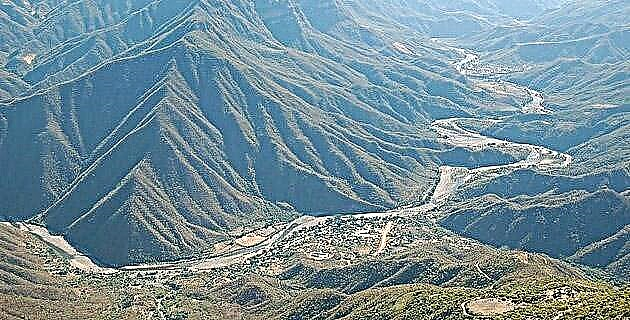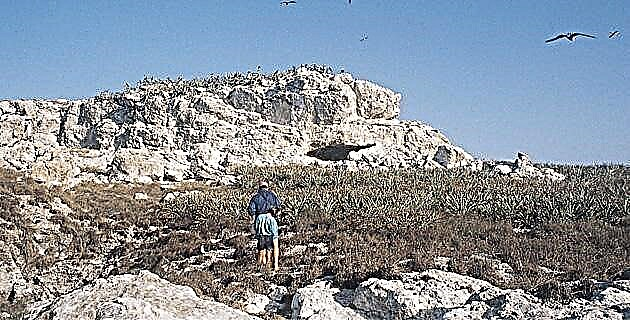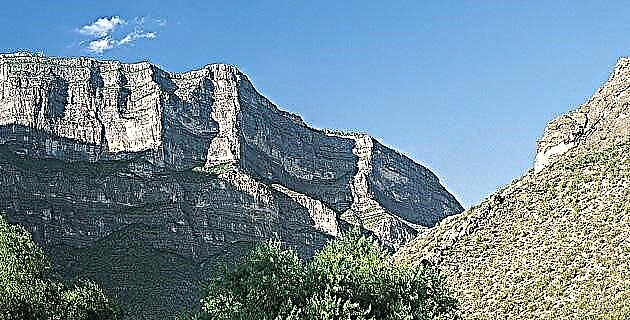It is really surprising that scientists know better how many stars there are in the galaxy than there are species on Earth.
Current diversity fluctuates between seven and 20 million different species, according to very general estimates, although it can reach up to 80 million, each with variations in their genetic information, which live in a variety of biological communities. However, only about one and a half million have been classified and described; therefore, a very small proportion of the total has been named. Groups of organisms, such as bacteria, arthropods, fungi, and nematodes, have been little studied, while many marine and coastal species are practically unknown.
Biodiversity can be divided into three categories: a) genetic diversity, understood as the variation of genes within species; b) species diversity, that is, the variety existing in a region - the number, that is, its "richness" is a measure that is "often used"; c) diversity of ecosystems, whose number and distribution can be measured in the communities and species associations in general terms. To encompass all aspects of biodiversity, it is necessary to speak of cultural diversity, which includes the ethnic groups of each country, as well as cultural manifestations and the use of natural resources.
THE REDUCTION OF BIODIVERSITY
It is a direct consequence of human development, as many ecosystems have been converted into impoverished systems, less economically and biologically productive. The inappropriate use of ecosystems, in addition to disturbing their functioning, also implies a cost and the loss of species.
Likewise, we are totally dependent on biological capital. Diversity within and between species has provided us with food, wood, fiber, energy, raw materials, chemicals, industrials, and medicines.
It should be remembered that at the end of the 80s and early 90s the term mega-diversity was coined, which refers to the countries that concentrate the greatest biodiversity on the planet, and although the word goes beyond the number of species, It is an index to take into account, since of all the nations only 17 include between 66 to 75% or more of the biodiversity, in a total of 51 million 189 396 km2.
ONE OF THE MAIN
Mexico is one of the top five countries in megadiversity and ranks seventh by area, with one million 972 544 km2. Among the characteristics that define this mega-diversity are: its geographical location between two regions, the Nearctic and the Neotropical, therefore, we find species from the north and south; the variety of climates, from dry to humid, as well as temperatures from very cold to warm. Finally, there is the topography, from flat areas to very intricate.
Similarly, currently Mexico is home to between 10 and 12% of all plant and animal species on the planet, it has 439 species of mammals, 705 of reptiles, 289 of amphibians, 35 of marine mammals and 1061 of birds; but more than half are in danger of extinction.
Regarding fauna, there are examples from the Nearctic region, such as desert tortoises, splendid monarch butterflies, axolotls, geese, moles, bears, bison and bighorn sheep. On the other hand, there are samples of Neotropical fauna, such as iguanas, nauyacas, macaws, spider and howler monkeys, anteaters and tapirs, among others, while species such as hummingbirds, armadillos, opossums, and others were distributed in both regions.
Without a doubt, the marine fauna has the greatest biodiversity, located in a biologically rich region such as the coral reefs of the Caribbean, whose front extends for more than 200 km, sponges, jellyfish, shrimp, sea cucumbers, urchins and a large number of multi-colored species. More than 140 species and 1,300 of polychaetes or sea worms have been described in the Gulf of California.
If we could extend our vision to and observe throughout the country from the microscopic to the most obvious, scrutinizing volcanoes, caves and mountains, rivers, lagoons and seas, that is, in all possible ecosystems, We would verify that absolutely everything has been colonized by a great variety of life forms, and most arrived before humans. However we have displaced them and many times led to extinction.
Terrestrial invertebrates are the most diverse organisms and arthropods lead the way in number, species of insects such as beetles, butterflies, bees, dragonflies, ants and arachnids such as spiders or scorpions.
In Mexico, 1,589 species of bees are known, 328 of dragonflies, more than 1,500 diurnal butterflies and many more nocturnal, and there are more than 12,000 beetles or 1,600 spiders, while more than 2,122 species have been reported. of fish in marine and continental waters, that is, about 10% of the world total, of which 380 species are distributed in fresh waters, especially in hydrological basins of temperate, humid and tropical regions.
The country has more than 290 species of amphibians and 750 of reptiles, representing almost 10% of the total in the world. Caecilia, toads and frogs form the amphibian group, while land and marine snakes, such as coral reefs, nauyacas, rattlesnakes and cliffs, or saurians such as lizards, iguanas, guinea pigs and the elderly, such as turtles, alligators, crocodiles and others make up the reptile group.
About 1,050 of the 8,600 reported birds in the world are known, and of the total Mexican species 125 are endemic. 70% is located in the tropics, particularly in the states of Oaxaca, Chiapas, Campeche and Quintana Roo. This multicolored group confirms the great richness of species found in the country, among which the quetzals in Chiapas stand out; the white-headed pigeon that is only found on the island of Cozumel and some nearby ones; toucans, pelicans, cormorants, boobies and frigates, flamingos, herons, storks, etc. These represent some of the most common bird names that are easily found in the Mexican southeast.
SPEAKING OF THE SOUTHEAST
Chiapas has birds such as the quetzal and the horned peacock, whose habitat has been reduced to the degree of being isolated in the upper parts of the Sierra Madre. Of the predators, little more than 50 species of falconiforms are reported, such as hawks, hawks and eagles, as well as 38 of strigiforms, such as owls and owls, but the largest group is made up of passerines, such as magpies, crows and sparrows, among others. , that is, 60% of the species reported for Mexico.
Finally, mammals are the organisms that reach the largest sizes and also attract more attention along with birds. There are 452 species of terrestrial mammals, of which 33% are endemic and 50% marine, distributed mainly in tropical regions. In the Lacandon Jungle there are abundant endemic species of Chiapas, especially mammals.
The most widely distributed group are rodents, with 220 species, equivalent to 50% national and 5% worldwide. For bats or bats, 132 species are reported, a group of mammals that is concentrated in a greater number - from a few hundred to millions - in caves in Campeche, Coahuila or Sonora.
Other mammals that abound in the Lacandon Jungle are artiodactyls: peccaries, deer, pronghorn and bighorn sheep: a group that forms colonies, some with up to 50 individuals, such as white-lipped peccaries. Likewise, the only representative of the group of perissodactyls reported for Mexico is that of tapirs, the largest land mammal for the American tropics that can be found in the southeast, in the jungles of Campeche and Chiapas. Individuals of this species can weigh up to 300 kilograms.
Among the most impressive organisms due to its history and its roots in Mesoamerican cultures due to the force it represents is the jaguar. Like pumas and ocelots, coyotes, foxes, bears, raccoons and badgers, among others, it belongs to the 35 species of carnivores in Mexico.
Spider monkeys and howler monkeys are two species of primates that can be found in the wild in the jungles of! southeast of Mexico. They have great importance in the Mayan culture, since from pre-Columbian times it was used in its symbolism.
On the other hand, cetaceans -whales and dolphins-, pinnipeds -seals and sea lions- and sirenids -manate- are examples of the 49 species of mammals that inhabit the country, representing 40% of those on the planet.
This is just a sample of the natural wealth of Mexico, with examples of its fauna. To have the complete vision requires years of knowledge and a lot of scientific research, but unfortunately there is not much time, since the rate of use of natural resources and overexploitation have led to the extinction of species such as the gray bear, the bison, the imperial woodpecker or the California condor, among others.
It is necessary to generate awareness to show our rich biodiversity, but due to ignorance and apathy we are losing it. In Mexico, where you can find more organisms in the wild is in Protected Natural Areas, which undoubtedly constitute a good conservation strategy. However, we need comprehensive programs to generate the development of local communities, with a view to reducing the pressure exerted on the conserved lands.
Until 2000, there were 89 areas decreed that covered just over 5% of the national territory, among which the Biosphere Reserves, the National Parks, the Areas for the Protection of Wild and Aquatic Flora and Fauna, as well as the Natural Monuments stand out.
There are about 10 million hectares conserved. Its existence does not guarantee the ideal preservation of biodiversity or the promotion of development and work with local communities, as well as scientific research. They are only components of a national conservation plan to be implemented if we want to conserve our natural wealth.
In order to know the status of species regarding their degree of threat, the IUCN Red List was created, the most complete inventory of the conservation status of animal and plant species worldwide, which uses a set of criteria to assess the risk of extinction of thousands of species and subspecies.
These criteria are relevant for all species and regions of the world. Strongly scientifically based, the IUCN Red List is recognized as the highest authority on the status of biological diversity, whose overall objective is to convey the urgency and magnitude of conservation issues to the public and to decision makers or motivators for world to try to reduce the extinction of species. An awareness of this is essential for the conservation of biodiversity.











